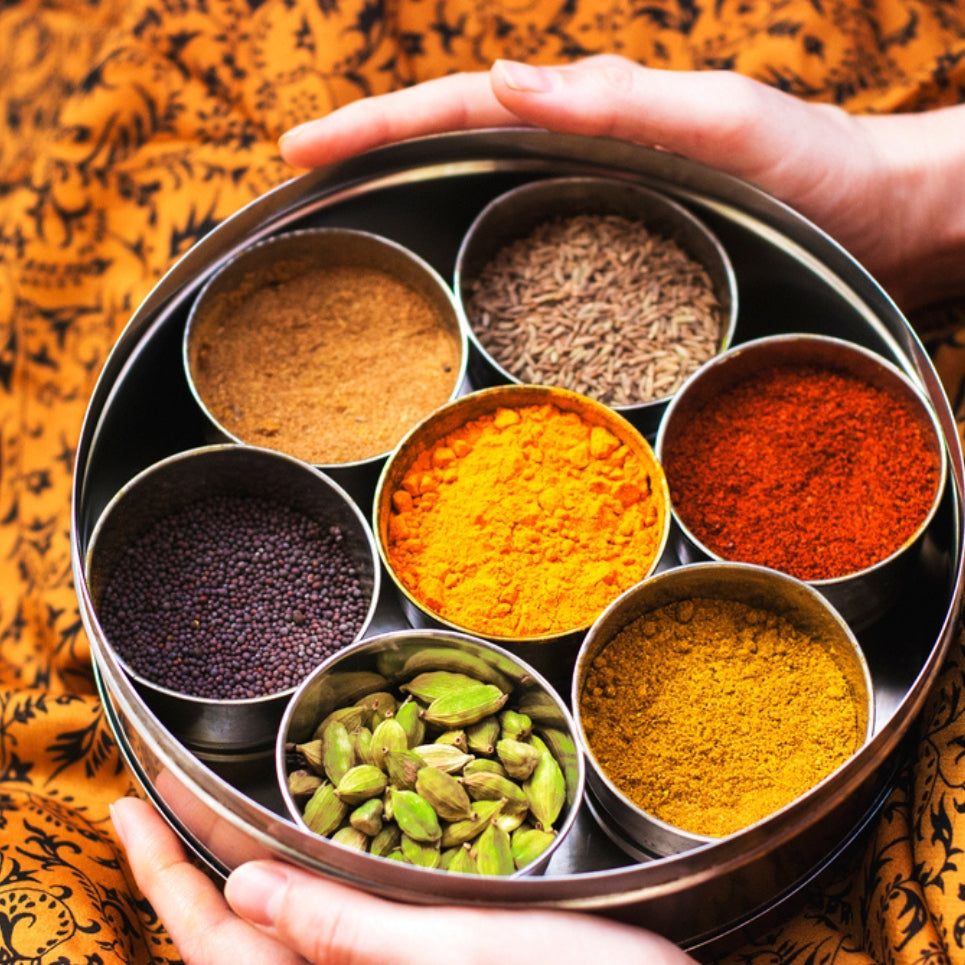India’s love affair with bold, tangy flavours has been passed down through generations, making sourness a key element in its rich culinary tradition. Whether it’s the puckering taste of tamarind, the fresh burst of lemon, or the mouth-watering zing of raw mangoes, sour flavours have woven their way into the hearts (and taste buds) of millions. But how exactly did this love for sourness begin, and why do we crave these tangy sensations? Let’s dive into India’s sour obsession.
In South India, tamarind is the reigning king of tang, while in North India, lemon and lime add their zesty kick. East India is known for its love of fermented foods, and West India has a deep connection to raw mangoes. Each region has its own unique take on sourness, making it an essential component of Indian cuisine’s identity.
Raw Mango in Pickles
Raw mangoes are often sliced and pickled with a mix of spices, creating a tangy condiment known as aachar that can be enjoyed year-round. This beloved pickle, made using traditional methods passed down through generations, features spices like mustard seeds, fenugreek, and turmeric, which enhance the mango's flavour. The fermentation process adds depth, and each family often has its own secret recipe, making mango pickles a cherished part of culinary traditions.
Dhokla is a light, fluffy snack made from fermented chickpea flour, while idli is a soft rice cake perfect for dipping in chutneys. Kanji, a spicy fermented drink made from black carrots, aids digestion and is especially popular in winter. These foods are not only delicious but also rich in probiotics, promoting gut health and showcasing the wisdom of traditional culinary practices.
A. Sour foods can stimulate digestion by increasing saliva production and enhancing gastric juices.
Q. Can I use yogurt as a souring agent in cooking?
A. Yes, yogurt is commonly used in Indian dishes for its tangy flavour and creamy texture, often in marinades and sauces.
Q. What are the differences between fresh and dried sour ingredients?
A. Fresh ingredients typically have a brighter, more pronounced flavour, while dried ingredients like amchur offer a concentrated tanginess.
Q. How does climate influence the use of sour ingredients in different regions of India?
A. Warmer climates often favour sour ingredients as they can help preserve food and provide a refreshing taste.
Q. What are some innovative ways to use sour ingredients in modern cooking?
A. Incorporate sour elements into dressings, marinades, or even cocktails for a contemporary twist on traditional flavours.
The Origins of Sour Flavours in Indian Cuisine
India’s affinity for sourness can be traced back centuries. From ancient Ayurvedic texts that highlight the health benefits of sour foods to the use of tangy ingredients in traditional rituals and offerings, sour flavours have always been cherished. However, India’s diverse geography and climate have shaped its culinary palette, leading to a wide variety of sour ingredients used across regions.In South India, tamarind is the reigning king of tang, while in North India, lemon and lime add their zesty kick. East India is known for its love of fermented foods, and West India has a deep connection to raw mangoes. Each region has its own unique take on sourness, making it an essential component of Indian cuisine’s identity.
Tamarind: The King of Tang
Among the vast array of sour ingredients, tamarind stands out as a true staple. This dark, sticky fruit is known for its sharp yet slightly sweet taste. Tamarind’s versatility is unmatched, finding its way into chutneys, curries, and even beverages. It brings depth to dishes like sambar, rasam, and pani puri, where its tangy punch elevates flavours to new heights.Tamarind in Chutneys and Sauces
One of the most common uses of tamarind is in chutneys and sauces. These dips are perfect for adding an instant zing to snacks like samosas and pakoras. The balance of sweet, spicy, and sour is what makes tamarind-based chutneys a must-have at any Indian meal.Tamarind in Curries and Rice Dishes
Tamarind is also a star player in many South Indian curries and rice dishes. Its tartness helps balance rich flavours, giving the dish a satisfying depth. Tamarind rice, or Puliyodarai, is a popular comfort food where the sour flavour beautifully complements the spiced rice.Lemon and Lime: A Zesty Addition
No Indian kitchen is complete without lemon or lime. These citrus fruits are often squeezed over dishes to add a fresh, tangy finish. From chaat to dal, a dash of lemon juice can transform any dish. Not only do they enhance flavour, but lemons and limes also have great health benefits, being rich in Vitamin C.Lemon in Drinks and Marinades
Lemon is a key ingredient in refreshing drinks like nimbu pani (lemonade) and shikanji. It’s also used in marinades to tenderize meats and add a bright zing to grilled vegetables.Lime in Street Food and Salads
In street foods like bhel puri and sev puri, a generous squeeze of lime juice ties all the flavours together. It’s also used in salads for a burst of freshness.Mango: The King of Fruits with a Tangy Twist
Mango is a treasure in Indian cuisine, cherished for its rich flavours and incredible versatility. This fruit, available in both ripe and unripe forms, plays a pivotal role in numerous culinary traditions across the country. Families eagerly anticipate the arrival of mango season, which is often marked by the preparation of various delicacies.Raw Mango in Pickles
Raw mangoes are often sliced and pickled with a mix of spices, creating a tangy condiment known as aachar that can be enjoyed year-round. This beloved pickle, made using traditional methods passed down through generations, features spices like mustard seeds, fenugreek, and turmeric, which enhance the mango's flavour. The fermentation process adds depth, and each family often has its own secret recipe, making mango pickles a cherished part of culinary traditions.Mango Chutneys and Amchur
Mango chutneys, made from both ripe and unripe mangoes, add a delightful tang to meals. Amchur (dried mango powder) is used to add a sour note to dishes like chole (chickpea curry) and aloo (potato) dishes.Amla: The Superfood with a Sour Punch
Amla, also known as Indian gooseberry, is celebrated for its tangy flavour and numerous health benefits. This small, green fruit is not only a culinary delight but also a powerhouse of nutrition, making it a staple in many Indian households.Amla in Traditional Ayurvedic Medicine
In Ayurveda, amla is refered as a superfood, praised for its high vitamin C content and its ability to rejuvenate the body. It is believed to enhance immunity, improve digestion, and promote healthy skin and hair. It is often used in various forms—fresh, dried, or as a powder—in herbal remedies, showcasing its versatility in holistic health practices.Amla Pickles and Chutneys
Amla is frequently pickled or transformed into chutneys, adding a sour punch to meals while providing a boost of antioxidants. These pickles create a tangy condiment that complements a wide range of dishes. Amla chutneys can enhance the flavours of rice, lentils, and curries, making them not just delicious but also nutritious additions to the table.Pineapple: Tropical Tang
Pineapple’s sweet-tart flavour brings an exotic touch to Indian dishes, making it a versatile ingredient that enhances both savoury and sweet preparations. This tropical fruit is not only refreshing but also adds a vibrant burst of colour and flavour, elevating the overall dining experience.Pineapple in Chutneys and Salads
Pineapple chutneys are a delightful mix of sweetness and tanginess, often served with spicy dishes to balance the heat. These chutneys include ingredients like ginger, green chili, and coriander, enhancing the pineapple's natural flavour. In salads, pineapple adds a tropical twist, especially in fruit chaat, where its juicy pieces are combined with a medley of spices, citrus, and other fruits to create a light, zesty dish that’s perfect for warm weather.Pineapple in Sweet Dishes
Pineapple shines in sweet dishes, adding a delightful balance of sweetness and tang. It is often featured in desserts like pineapple halwa, where its acidity complements the richness of ghee and sugar. Additionally, pineapple enhances cakes and pastries, infusing them with a tropical flavour that makes every bite refreshing and indulgent.Tomato: A Versatile Tangy Ingredient
Tomato is perhaps the most ubiquitous souring agent in Indian kitchens, known for its versatility and vibrant flavour. Its rich, tangy profile not only enhances the taste of dishes but also contributes to their colour, making meals visually appealing.Tomato in Curries
Tomato provides the tangy base for countless Indian curries, from sambar to dal makhani. Its natural acidity balances out the richness of spices and oils, creating a harmonious blend of flavours that is both comforting and satisfying. The slow-cooked tomatoes break down to form a luscious sauce, allowing the spices to meld together beautifully, enriching the overall taste.Tomato-Based Chutneys
Tomato chutney, often seasoned with garlic and chili, is a tangy, slightly spicy condiment that pairs perfectly with dosas, idlis, and parathas. This chutney can be adjusted for heat and sweetness, making it a versatile accompaniment for a variety of dishes. Tomato chutney can be enhanced with ingredients like coconut or herbs, further diversifying its flavour and making it a staple in many regional cuisines across India.Orange: The Sweet and Sour Delight
Orange, while often associated with sweetness, has a subtle sour undertone that adds complexity to various dishes. This vibrant fruit not only brightens up meals but also enhances flavours, making it a versatile ingredient in both sweet and savoury recipes.Orange in Desserts
Orange zest is frequently used in desserts to add a citrusy note to cakes, puddings, and halwas. Its aromatic oils elevate the flavour profile, creating a refreshing contrast to ingredients like chocolate and cream. Orange segments can be used in fruit salads, tarts, and sorbets, offering a burst of juiciness that complements other fruits and adds a delightful twist.Orange in Savoury Dishes
In savoury dishes, orange juice is sometimes added to gravies for a sweet-tangy flavour, especially in festive dishes like orange-infused rice or salads. Orange segments can be added to stir-fries and salsas, offering bursts of flavour and texture that elevate the overall dish. In dressings and sauces, orange zest or juice adds a bright, refreshing lift that beautifully complements roasted vegetables.Fermented Foods: A Hidden Source of Tang
India has a rich tradition of fermented foods that are naturally sour, enhancing flavours and boosting health benefits. Dhokla, idli, and kanji are popular examples, each offering distinct tastes and textures.Dhokla is a light, fluffy snack made from fermented chickpea flour, while idli is a soft rice cake perfect for dipping in chutneys. Kanji, a spicy fermented drink made from black carrots, aids digestion and is especially popular in winter. These foods are not only delicious but also rich in probiotics, promoting gut health and showcasing the wisdom of traditional culinary practices.
Regional Variations in Sour Flavours
South Indian vs North Indian Uses of Sour Ingredients
In South India, tamarind is the primary souring agent, lending its distinctive tang to dishes like sambar and rasam. Meanwhile, in the North, amchur (dried mango powder) and tomatoes are more commonly used to achieve a sour flavour, adding complexity to curries and dals. Both regions, however, celebrate sourness in their own unique ways, highlighting local ingredients and culinary traditions.Famous Regional Dishes with Sour Elements
From Andhra Pradesh’s tangy gongura curry made with sorrel leaves to Gujarat’s sweet and sour dal, regional specialties highlight the variety of sour flavours in Indian vegetarian cuisine. North India features kadhi, a yogurt-based curry made from chickpea flour with a slight tang, while Maharashtra uses kokum to add sourness to dishes. These diverse applications of sour ingredients reflect regional identities and enhance the dining experience, making each meal a flavourful journey through India’s culinary landscape.The Science Behind Our Love for Sour
Why do we love sour foods so much? The answer lies in both biology and psychology. Sourness triggers saliva production, which helps break down food, making it easier to digest. It also activates certain pleasure centers in our brain, giving us a sense of satisfaction. Moreover, sour foods have long been linked to health benefits like improved digestion, better hydration, and boosted immunity.Zama Organics: Embracing the Tangy Tradition
At Zama Organics, we understand the power of sour flavours. Our collection of fresh, naturally sourced ingredients allows you to bring the tangy magic of Indian cuisine into your home. Whether it’s our sour tamarind, premium lemons, or fresh tomatoes, every product is handpicked to ensure the best quality and flavour.Conclusion
India’s love for sour flavours is more than just a taste preference – it’s a celebration of balance, tradition, and wellness. Whether through tamarind, lemon, or fermented foods, sourness enhances the richness of Indian cuisine. With Zama Organics, you can continue to enjoy these tangy treasures, knowing you’re getting the best quality ingredients to elevate your meals.FAQs
Q. How do sour ingredients affect digestion?A. Sour foods can stimulate digestion by increasing saliva production and enhancing gastric juices.
Q. Can I use yogurt as a souring agent in cooking?
A. Yes, yogurt is commonly used in Indian dishes for its tangy flavour and creamy texture, often in marinades and sauces.
Q. What are the differences between fresh and dried sour ingredients?
A. Fresh ingredients typically have a brighter, more pronounced flavour, while dried ingredients like amchur offer a concentrated tanginess.
Q. How does climate influence the use of sour ingredients in different regions of India?
A. Warmer climates often favour sour ingredients as they can help preserve food and provide a refreshing taste.
Q. What are some innovative ways to use sour ingredients in modern cooking?
A. Incorporate sour elements into dressings, marinades, or even cocktails for a contemporary twist on traditional flavours.




















